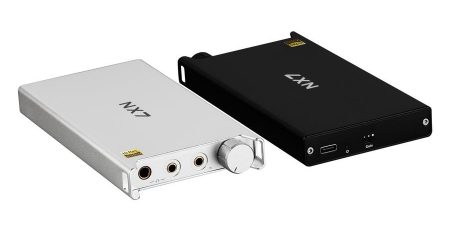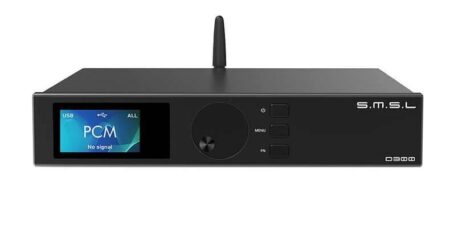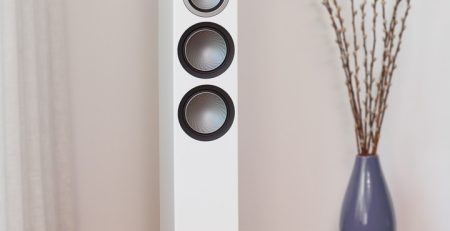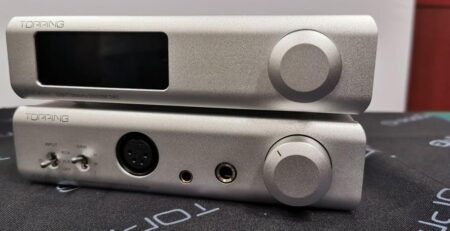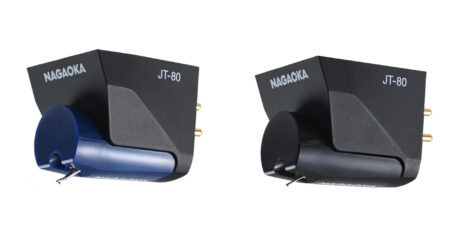What is DSD Audio? Do i need it? Do i have it?
You might have heard of DSD audio, but what exactly is it? Here’s everything you need to know.
The DSD format seems to be back in fashion again. Most new digital products boast DSD compatibility, and the music catalogue is now big enough to command respect, especially if you’re into jazz and classical.
But what is it? And how is it different from the digital signals used in CDs and every other Hi -res music format? Let us explain.
In the last few years, digital audio has become a bit more complex than it used to be. You can listen to digital files in a wide variety of formats and we’ve written blog posts about these and the differences between compressed, lossless and high resolution files before. There is one format that’s supported by some of our products that’s different to any other digital media though. This format is called DSD and there are some myths and misconceptions about the format that we’re going to try and clear up.
DSD stands for Direct Stream Digital. It’s a high-resolution format that produces a high-resolution signal in a different way to that employed by the PCM system that can be transmitted as WAV, FLAC, ALAC or AIFF. If we were to look at a ’24 bit 96kHz’ file- a commonly used high resolution sample rate, this contains a stream of information 24 bits in size. This stream of information is then sampled 96,000 times a second- giving us the 96kHz part- to produce a signal that is then converted to an analogue signal by a DAC. The system has been used since the dawn of CD (which uses a 16/44.1kHz signal) and it also represents the basis of how our ATF upsampling process works.
DSD takes a different approach to the creation of a high resolution audio signal. Instead of using many bits of information in the signal, DSD uses a single bit. However, instead of sampling the information several thousand times a second, this single bit samples 2.8 million times a second to generate the audio signal. The result is still a high-res signal it’s just generated in a completely different way.

DSD also came into being for slightly different reasons to most other formats. In the 1990s Sony and Philips worked together to develop the replacement for the CD. The result was Super Audio CD, a format supported by our CXU Universal Blu-Ray Player. The high resolution content on SACD discs is encoded as DSD (many discs also have a CD layer so they will also work on a conventional CD player). SACD didn’t go on to replace CD and remains a specialist format, but the world of digital audio has moved into places beyond physical discs.
This left DSD a format without a medium, but the ‘character’ many people feel that DSD brings to music has meant that it has returned as a downloadable format that can be used via UPnP Streaming or USB. So what is this character? Many fans of the format say that there is a naturalness and tonal sweetness to DSD that’s not found in more conventional formats and that it’s easier and more forgiving to listen to. This is hard to prove outright but our view has always been to try and let people decide for themselves, so both our CXN and 851N network audio players support DSD.
There are some important details worth knowing when making a comparison between DSD and a FLAC file, for example. The first is that DSD is not magically better than its rivals. A ‘standard’ DSD file- often referred to as DSD64 is roughly equivalent to a sample rate of 24/88.2kHz. ‘Double DSD’ or DSD128 samples that single bit of information 5.6 million times a second to give you a signal equivalent to 24/176.2kHz. Again, this is a sample rate that can be reproduced by formats that are not DSD. Higher rates exist but they are very, very rare. If anyone says that DSD is ‘better’ than other formats, the numbers don’t necessarily support that.
Against this, there are some more logical answers why many DSD recordings sound very good indeed. Studios that master music in DSD specialise in high quality recordings of extremely good musicians. Because of this, DSD material includes some sensational music and if you’re a fan of classical music in particular, you’ll find that some of the finest performances by orchestras and composers have been captured in DSD and thanks to the care and effort that went into them, they sound fantastic even before any of the benefits of the format come into play.
DSD isn’t currently a mainstream format and there’s a chance it won’t ever truly be something there’s a huge choice of music in. Despite this it does have some truly stunning recordings in exceptionally high quality and thanks to its inclusion on our products, it’s something you can enjoy as part of your wider listening.
Do you have DSD files in your digital music collection? Is it your format of choice?
What are the downsides to DSD?
That all looks good, but there are also issues with DSD. It’s not very practical to manipulate a DSD recording.
All the things that are required post-recording such as equalisation, editing, dynamic range control and adding reverb usually involve the DSD stream being converted to PCM to do the processing and then switched back.
That’s hardly a pure way of doing things, right? Just about every studio recording made with DSD goes through this process. It’s down to a lack of suitable equipment and processing software.
You may come across the term DXD on a recording. This is where the original DSD signal has been converted to 24-bit/352kHz PCM and processed in that form throughout. While the name (intentionally or not) sounds like DSD, it is simply very high resolution PCM.
When it comes to measurement, DSD also has issues with high levels of noise compared with PCM. Clever processing techniques allow the engineers to shift the noise above our hearing, and optimize the performance and dynamic range in the audible region. The high-frequency noise is generally filtered out.
Is DSD hi-res?
So how high resolution is a DSD recording? There’s no exact way of striking equivalence between PCM and DSD but it’s around the same as 24-bit/88.2kHz PCM.
In terms of dynamic range, DSD is claimed to be around 120dB in the audible frequency range. In comparison, CD measures around 96dB, and 24-bit/192kHz recordings have a theoretical maximum of around 144dB.
Although the bigger numbers are more impressive, even the range of CD is considered more than enough to cope with any recording.
How do you play DSD?
DSD playback has become far more common in digital equipment over recent years and that’s down to the greater availability of downloadable music files. Just make sure your portable music player, streamer and/or Dac are compatible with the format.
Most recent mid-to-high end digital playback equipment tends to be compatible, so if you have something suitable there’s no reason to treat it any different from FLAC or WAV files. Some flagship smartphones support DSD natively. Even Apple i phone users can play DSD files using additional equipment.
On a download site, you may occasionally come across the terms DSF and DFF. These are two kinds of DSD files, but the only thing you need to know about them is that you should always choose the DSF version if your player is compatible – it’s better at holding a track’s metadata information (artist/song name, album art etc).
Where can you buy DSD audio files?

Most of the major audiophile music sites sell DSD downloads. The likes of HDtracks, Highresaudio and Primephonic are good places to start.
Alternatively, if you prefer physical formats and have a compatible disc player, then SACDs are still fairly widely available.
https://www.whathifi.com/advice/what-dsd-audio-how-it-works-where-to-download-files-and-more


